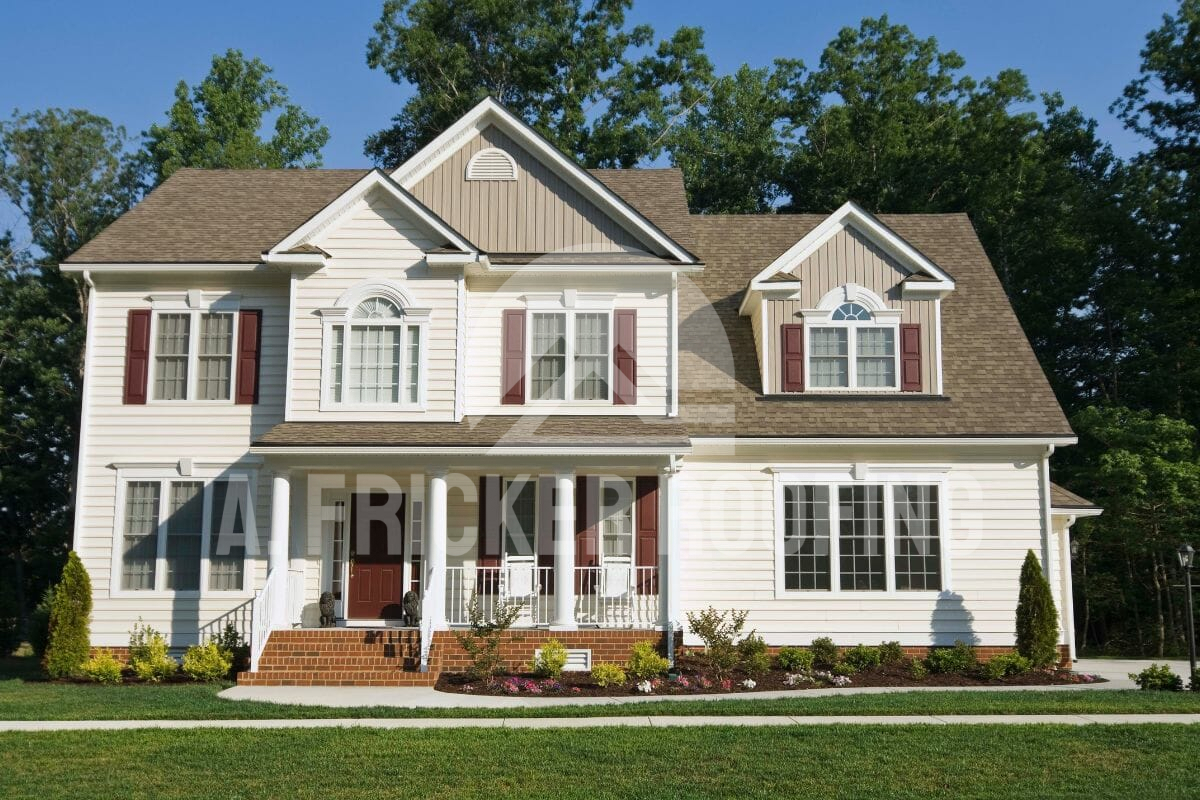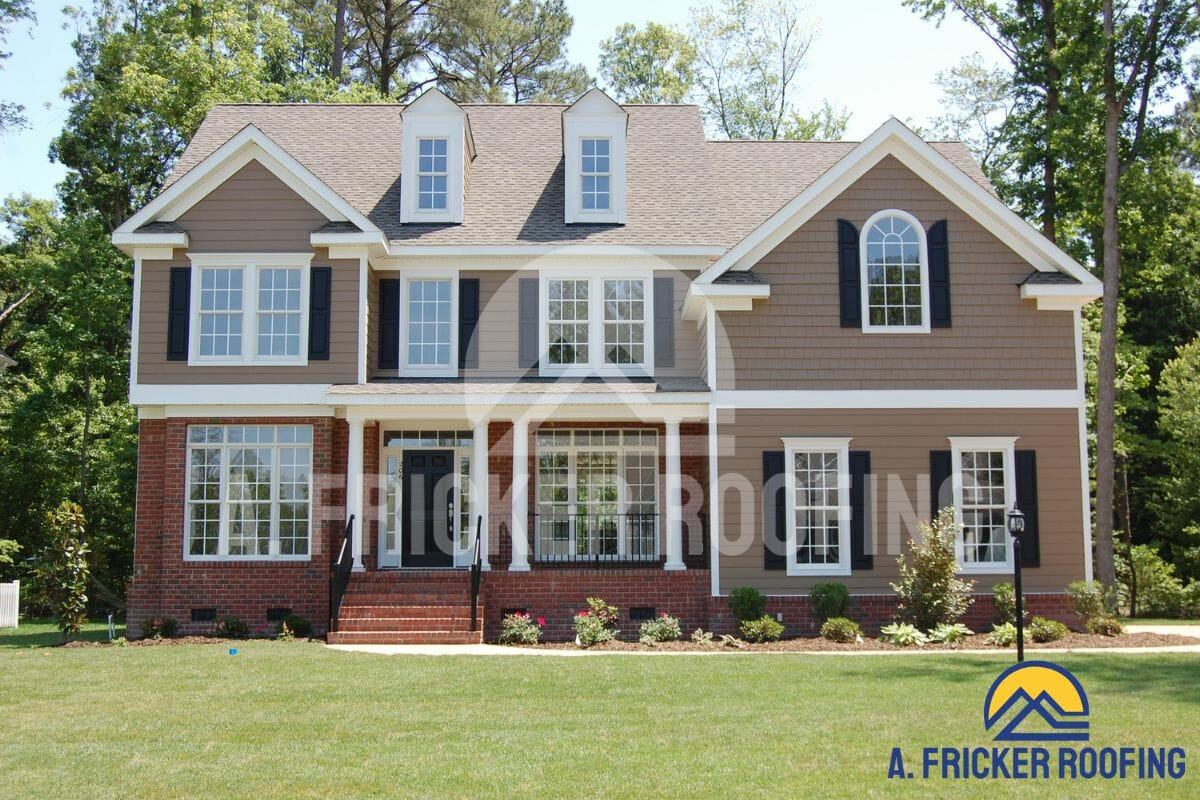Have you ever considered using vinyl siding for your home? If so, you’re not alone. Vinyl siding is a popular choice for many Tulsa homeowners due to its durability, low maintenance, and affordability.
With a cost of $3 to $7 per square foot, it’s one of the most budget-friendly siding options available. Plus, it’s able to withstand extreme temperatures and high winds, with some manufacturers offering warranties for winds up to 150 mph!
Additionally, vinyl siding doesn’t rot like wood, or dent easily like aluminum, making repairs and replacements a breeze. Plus, it comes in a variety of thicknesses, styles, and textures that can mimic more expensive materials.
However, one question that often arises is, “how long does vinyl siding last?” In this blog post, we’ll provide an overview of the expected lifespan of vinyl siding and some of the factors that can affect it.
Our goal is to help you understand what you can expect from this building material so you can make an informed decision about whether it’s the right choice for your home! So let’s get started!
Average Lifespan of Vinyl Siding
According to the InterNACHI report, the average lifespan of vinyl siding is estimated to be around 60 years. However, it’s important to note that this estimate can vary based on several factors, including the quality of the siding, the installation process, and the local climate. In some cases, vinyl siding may last anywhere from 20-40 years, depending on the specific circumstances of the home.
It’s important to consider these factors when determining the expected lifespan of your vinyl siding and deciding whether it is the right choice for your home.
Let’s take a look at factors that may affect the lifespan of your vinyl siding.
Factors That Affect the Lifespan of Vinyl Siding
There are several factors that can impact the longevity of vinyl siding, including the quality of the siding, the installation process, and the local climate. Let’s take a closer look at each of these factors:

Quality Of The Siding
The quality of the siding you choose is an important factor to consider when determining its lifespan. In general, the higher-quality siding will last longer than lower-quality siding. This is because higher-quality siding is typically made from more durable materials that are better able to withstand the elements. When shopping for vinyl siding, it’s a good idea to look for vinyl siding brands that have a reputation for producing high-quality products.
When shopping, you can also tell how durable the siding is based on the grade it’s given. The thickness of the vinyl is measured in millimeters, and contractors will commonly use terms such as “Builder’s Grade” or “Premium Grade” to refer to different thicknesses of the vinyl instead of listing it in millimeters.
Installation Process
Proper installation is crucial for ensuring that your vinyl siding lasts as long as possible. If the siding is not installed correctly, it may become loose, buckle, or warp over time, which can lead to damage. To ensure proper installation, it’s a good idea to hire a professional siding contractor who has experience working with vinyl.
Local Climate
The local climate can also have a big impact on the lifespan of vinyl siding. In general, climates with extreme temperatures or weather conditions can have a harsher impact on siding than more moderate climates. For example, if you live in an area with high levels of sun exposure, like southern states such as Oklahoma or Texas, your siding may fade or wear out more quickly than it would in a moderate climate with moderate temperatures. Similarly, if you experience heavy rain, snowstorms, or hail, your siding may become weakened, cracked, or damaged.
How To Maintain Your Vinyl Siding
Proper maintenance and care are essential for prolonging the lifespan of vinyl siding. By keeping up with some simple maintenance tasks on a regular basis, you can ensure that your siding stays in good condition for as long as possible. Here are some specific tasks that homeowners can do to maintain their vinyl siding:
Cleaning
One of the most important maintenance tasks for vinyl siding is cleaning. Over time, dirt, grime, and other debris accumulate on the siding, which can lead to discoloration and other types of damage. To prevent this, it’s a good idea to clean your siding at least once or twice a year. You can do this by using a soft-bristled brush, or a hose with a pressure nozzle, to wash the siding gently. Avoid using harsh chemicals or abrasive tools, as these can damage the siding.
Repairing Damage
Another important maintenance task is to repair any damage as soon as it is noticed. This can include things like holes, cracks, or other types of damage. You can prevent these issues from worsening and potentially causing more extensive damage by fixing them promptly.
Checking For Leaks
It’s also a good idea to regularly check your vinyl siding for holes or leaks. If you notice any water stains or other signs of moisture within your home, you may have a leak that needs to be repaired. Fixing leaks promptly can help prevent damage to your siding and the underlying structure of your home.
By following these maintenance tasks and taking good care of your vinyl siding, you can be assured it will last for a long time.
Get The Best Siding Replacement Service In Tulsa
As you can see, vinyl siding is a popular choice for homeowners due to its durability, low maintenance, and affordability. While the average lifespan of vinyl siding is estimated to be around 60 years, there are several factors that can impact this estimate, including the quality of the siding, the installation process, and the local climate.
If you’re a homeowner in Tulsa, Oklahoma, and you’re in need of siding replacement or repair services, you can count on A. Fricker Roofing and Waterproofing to get the job done right! Our team of experienced professionals is equipped to handle all of your siding needs, and we pride ourselves on offering the best siding replacement service in the area. Contact us today at (918) 402-7167 to learn more about how we can help you keep your home’s siding in top condition.

